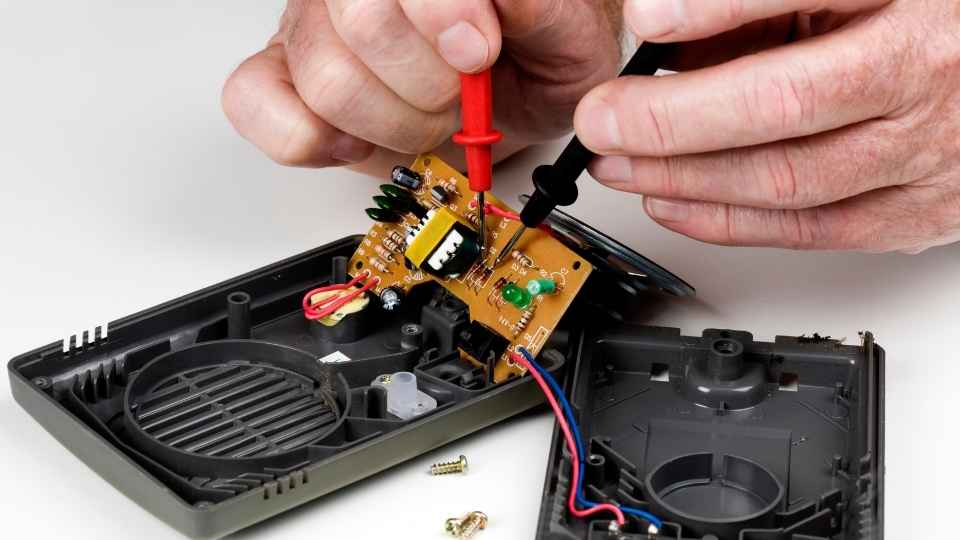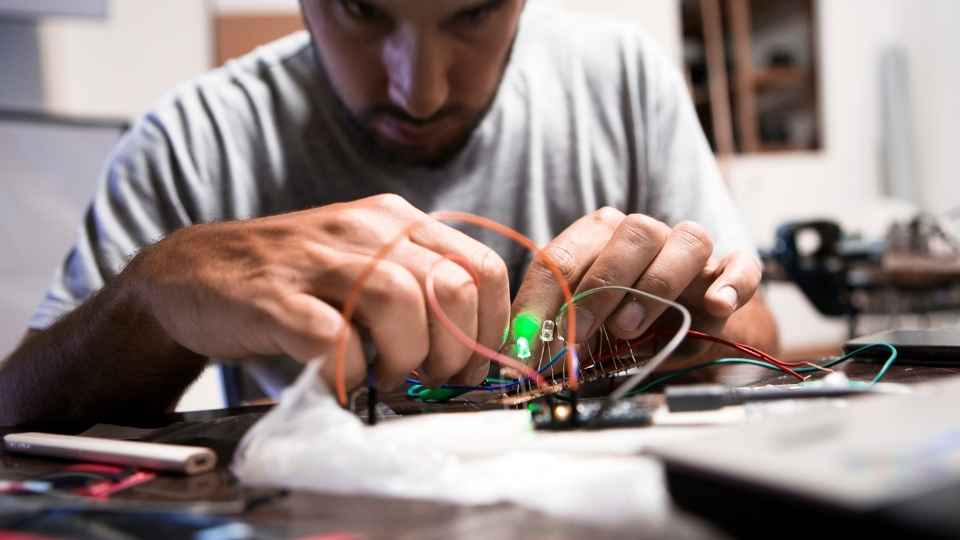
Wire enthusiasts around the world, rejoice! In the realm of electronics, there exists a versatile tool that can elevate your projects to new heights of precision and reliability. Enter heat-shrink tubing – the unsung hero of wire connections.
With its ability to provide insulation and protection, heat-shrink tubing ensures long-lasting and reliable connections in various applications.
Join us as we unveil the essentiality of this remarkable tool for every electronics enthusiast. Prepare to be amazed by its functionality, versatility, and undeniable importance in achieving freedom from faulty connections.
Key Takeaways
- Heat-shrink tubing provides insulation, protection, and strain relief for electrical connections.
- It creates a tight seal and protects connections from moisture, dirt, and contaminants.
- Heat-shrink tubing absorbs forces that can damage or break fragile wires.
- It offers resistance to chemicals, abrasion, and temperature extremes, ensuring the safety and longevity of electronic components.
The Benefits of Heat-Shrink Tubing in Electronics Projects
Heat-shrink tubing plays a crucial role in electronics projects by providing insulation, protection, and strain relief for electrical connections.
This versatile material is made from a polymer that shrinks when heated, creating a tight seal around wires or components.
The primary benefit of heat-shrink tubing is its ability to insulate and protect electrical connections from moisture, dirt, and other contaminants.
It also provides strain relief by absorbing the forces that can damage or break fragile wires.

Additionally, heat-shrink tubing offers excellent resistance to chemicals, abrasion, and temperature extremes.
Understanding the functionality of heat-shrink tubing allows electronics enthusiasts to confidently tackle projects with the assurance that their electrical connections are secure and well-protected.
Understanding the Functionality of Heat-Shrink Tubing
One of the key elements to consider when utilizing heat-shrink tubing is understanding its functionality and how it contributes to the overall efficiency and safety of electronic devices.
Heat-shrink tubing is a versatile protective covering that offers several advantages in electronics projects:
- Insulation: Heat-shrink tubing provides an additional layer of insulation, protecting wires from damage and reducing the risk of short circuits or electrical fires.
- Mechanical protection: It adds strength to fragile wires, preventing them from breaking or fraying due to bending or pulling.
- Environmental protection: The tubing creates a barrier against moisture, dust, and other contaminants that can harm electronic components.
- Aesthetics: Heat-shrink tubing gives a clean and professional finish to wire connections, improving the overall appearance of an electronics project.
Understanding these functionalities allows electronics enthusiasts to make informed decisions about using heat-shrink tubing for optimal efficiency and safety in their projects.
How Heat-Shrink Tubing Provides Insulation and Protection
Understanding the functionality and protective qualities of heat-shrink tubing is paramount in ensuring optimal insulation and safeguarding electronic components. Heat-shrink tubing is composed of a polymer material that, when heated, shrinks tightly around wires or cables, creating a secure and protective layer. The main purpose of this tubing is to provide insulation against electrical currents, preventing any potential short circuits or voltage leaks.
Additionally, heat-shrink tubing offers protection from environmental factors such as moisture, chemicals, and physical abrasions. The tight seal created by the shrinking process ensures that the electronics remain safe and free from any external interference.

With its ability to provide both insulation and protection, heat-shrink tubing is an essential tool for every electronics enthusiast.
Transition: Now that we understand how heat-shrink tubing provides insulation and protection for electronic components, let's explore the versatility of this tool in various applications.
The Versatility of Heat-Shrink Tubing in Various Applications
The versatility of heat-shrink tubing becomes evident when considering its applications in industries such as automotive, aerospace, and telecommunications. This flexible and durable material has proven to be an essential tool for professionals and enthusiasts alike.
Here are some key applications:
Automotive: Heat-shrink tubing is widely used in the automotive industry for wire harnessing, protecting electrical connections from moisture, abrasion, and other environmental factors.
Aerospace: In the aerospace sector, heat-shrink tubing is crucial for insulating wires and cables in aircraft systems. It ensures reliable performance even under extreme conditions such as high temperatures or vibrations.
Telecommunications: Heat-shrink tubing plays a vital role in telecommunications by providing insulation, strain relief, and protection from external elements like dust or water.

With its adaptability to various environments and ease of use, heat-shrink tubing remains an indispensable component across these industries. Its ability to provide efficient wire management solutions makes it a must-have tool for any electronics enthusiast seeking freedom in their projects.
Tips and Tricks for Using Heat-Shrink Tubing Effectively
To ensure effective use of heat-shrink tubing, it is important to carefully select the appropriate size and type for the specific application.
The first step in using heat-shrink tubing effectively is to measure the diameter of the wire or cable that needs to be covered. This measurement will determine the size of tubing needed.
It is also crucial to consider the shrink ratio of the tubing, which indicates how much the tubing will shrink when heated. Different applications may require different shrink ratios, so it is essential to choose a tubing with a shrink ratio that suits the specific requirements.
Additionally, selecting a high-quality heat-shrink tubing with good insulation properties and resistance to environmental factors such as moisture and UV rays can ensure long-lasting and reliable protection for your wires and cables.
Exploring Different Types and Sizes of Heat-Shrink Tubing
Exploring different types and sizes of heat-shrink tubing is crucial for achieving optimal results in various applications.
Different types of heat-shrink tubing offer unique properties such as flame resistance, chemical resistance, and electrical insulation.

Additionally, selecting the right size of heat-shrink tubing ensures a snug fit and proper protection for wires or cables.
Heat-Shrink Tubing Applications
Heat-shrink tubing finds extensive use in various applications within the field of electronics. Here are some key areas where heat-shrink tubing proves its indispensability:
Insulation: Heat-shrink tubing provides excellent insulation for wires and cables, protecting them from environmental factors such as moisture, dust, and chemicals.
Strain relief: By providing a secure and flexible covering over soldered joints or connectors, heat-shrink tubing relieves strain on the connection points, reducing the risk of damage caused by pulling or bending.
Identification: Different colored heat-shrink tubing can be used to identify different wires or components in complex electrical systems, ensuring easy troubleshooting and maintenance.
Cable management: Bundling multiple wires together with heat-shrink tubing not only keeps them organized but also prevents tangling and reduces the risk of accidental damage.
Understanding the wide range of applications for heat-shrink tubing is crucial when choosing the right size for your specific needs.

Choosing the Right Size?
When selecting the appropriate size of heat-shrink tubing, it is important to consider the diameter of the wire or component that needs to be covered. Heat-shrink tubing comes in various sizes, ranging from fractions of an inch to several inches in diameter. Choosing the right size is crucial for achieving a secure and reliable connection.
If the tubing is too small, it will not fit properly over the wire or component, resulting in an ineffective seal. On the other hand, if the tubing is too large, it may not shrink down adequately when heated, leaving gaps and compromising protection. Therefore, precise measurements must be taken to ensure a snug fit and proper coverage.
The role of heat-shrink tubing in ensuring long-lasting and reliable connections will now be discussed.
The Role of Heat-Shrink Tubing in Ensuring Long-lasting and Reliable Connections
To ensure the durability and dependability of electronic connections, the use of heat-shrink tubing is crucial. This versatile tool provides a protective layer that safeguards wires from external elements and prevents them from fraying or short-circuiting.
Here are four reasons why heat-shrink tubing is essential for every electronics enthusiast:
Insulation: Heat-shrink tubing acts as an insulator, reducing the risk of electrical shock and preventing current leakage.
Strain Relief: It offers strain relief by absorbing tension and minimizing stress on soldered joints or connectors.

Waterproofing: Heat-shrink tubing creates a watertight seal around wires, protecting them from moisture, humidity, and corrosion.
Identification: With various colors available, heat-shrink tubing allows for easy identification and organization of different wires or components.
Overall, heat-shrink tubing plays a vital role in ensuring long-lasting and reliable connections in electronic projects. Its ability to insulate, provide strain relief, waterproof, and aid in wire identification makes it an indispensable tool for any electronics enthusiast seeking freedom from potential connection issues.
Frequently Asked Questions
What Are the Common Materials Used in the Manufacturing of Heat-Shrink Tubing?
Heat-shrink tubing is commonly manufactured using materials such as polyolefin, PVC, fluoropolymer, and silicone. These materials provide electrical insulation, protection against moisture and chemicals, and mechanical strength for various applications in the electronics industry.
Can Heat-Shrink Tubing Be Used for Both Indoor and Outdoor Applications?
Heat-shrink tubing is a versatile tool that can be used for both indoor and outdoor applications. Its ability to provide insulation, protection, and strain relief makes it essential for electronics enthusiasts in various settings.
How Does Heat-Shrink Tubing Work to Provide Insulation and Protection to Electrical Connections?
Heat-shrink tubing works by applying heat to a plastic tube, causing it to shrink and tightly conform around electrical connections. This provides insulation and protection against moisture, dirt, and physical damage, ensuring reliable performance and longevity of the connections.
Are There Any Specific Safety Precautions That Need to Be Taken While Using Heat-Shrink Tubing?
When using heat-shrink tubing, it is important to take specific safety precautions. These include ensuring proper sizing, using a heat gun or torch with caution, and working in a well-ventilated area to prevent the release of harmful fumes.

Can Heat-Shrink Tubing Be Easily Removed if Needed, or Is It a Permanent Solution for Wire Connections?
Heat-shrink tubing provides a secure and durable solution for wire connections in electronics. While it is not easily removable, it can be cut away if necessary. However, caution should be exercised to avoid damaging the wires or components.
 Basic Electronics ConceptsEssential ToolsCircuit Design BasicsMicrocontrollersDIY Electronics ProjectsRoboticsPrivacy PolicyTerms And Conditions
Basic Electronics ConceptsEssential ToolsCircuit Design BasicsMicrocontrollersDIY Electronics ProjectsRoboticsPrivacy PolicyTerms And Conditions
